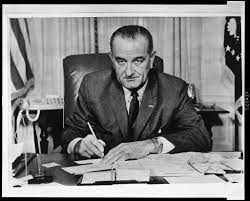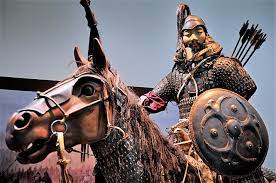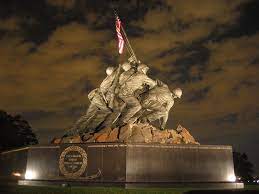In the year 1930, millions of Native Americans inhabited the lands of Georgia, Tennessee, Alabama, North Carolina and Florida. They lived on acres of lands in all the states that were occupied by their ancestors and was even held and cultivated over many generations. This Indian territory was on the west of the Mississippi River and was planned to be rid of all the indigenous tribes in the next decade. This was a period in which at least 100,000 people were forced out of their homes and approximately 15,000 people died with no fault of their own. This horrific incident spanning over a decade was named The Trail of Tears to symbolize the collective misery and struggle of the people who were forced out of their homes and made to flee to other places. The physical trail was the many routes that these indigenous people followed to reach where they ended up in portions of many states such as Missouri, North Carolina, Oklahoma, Alabama, Arkansas, Georgia, Illinois, Kentucky, and Tennessee.
Where the trail began
As most stories of carnage do, this one too began with the man’s greed and lust for money. The land on which the indigenous people lived was ensured for them by many laws in place. But many white settlers wanted to develop the place and took it upon themselves to “civilize” the tribes. The tribes were also seen as different people and consequentially a threat. They were simply seen as “others” who were residing on the lands that could be put to use for the white population. The then-president, Thomas Jefferson too, believed that the only solution to this problem was to civilize them. Civilization to him meant making them as close to white people as possible, which included forcing them to convert to Christianity, formal education, reading writing in English and all the other euro-centric practices prevalent in their society.
They also wanted the indigenous land because of one other reason i.e. the gold rush in Georgia which put huge wealth at stake in the year 1929. This was also the reason why atrocities like mass murders were committed, and people were forced to leave their lands. The state government and officials also joined hands with other forces like Euro-American land speculators to draw out all the people living in the regions.
The five tribes that lived in the region were Creek, Chickasaw, Choctaw, Cherokee and Seminole amongst many others and they were all equally at threat. Some of these tribes from Georgia, Tennessee, Alabama, North Carolina and Florida agreed to accept these changes by the administration and came to be known as the “Five Civilized Tribes” collectively. Thomas Jefferson only went as far as aiding with their assimilation but it was the next president of the USA who actually pulled the trigger on the relocation of these tribes from their native places. The reason why then-president Andrew Jackson saw the relocation as a necessity was for the economic prosperity of America. He wanted to make way for the land to be utilized in many ways, especially for cotton.
The brutal act for Indian removal
Finally, the Indian Removal Act was passed by President Andrew Jackson in the year that authorized them to negotiate the terms and conditions for their relocation to the further west. The area to which they were to be reloaded was known as the “Indian relocation zone” and was miles away from where they currently lived. It was all on papers from the terms to the compensation that was supposed to be paid to the tribes. The reality, however, was entirely different as the relocation took a brutal and hostile form without any respect for the health and lives of the tribes. When the process was complete, they were even denied their annuities that they supposed to receive to live their day to day lives. Jackson also allowed all the states to nullify the rights of Native Americans so that they would not be able to vote or sue in court for the wrong done to them.
What ensued after was brutality, the struggle for life and loss of life that was unsurmountable for the tribes. Many of the tribes were chained and made to travel through fatal conditions such as floods and freezing temperatures. More than 4000 Choctaws died of cholera, many more from malnutrition and also ineptitude of the federal government. It was after this trip has ended in its designated place that one Choctaw Chief reported to the newspapers and called this trip nightmarish and “a trail of tears”.
The struggle for rights
Not every tribe left their rightful ancestral land peacefully though. When the Seminoles were being removed from Florida in the year 1932, they resisted and were met with the same brutal force. They fought two wars after losing which, they were boarded onto ships like cattle and transported to their designated Indian territory. Some adamant ones though hid and remained in Florida.
The Creeks were 15,000 in total at the beginning of the process of relocation and more than 3,500 were lost during it. The Cherokees went one step ahead and used the system and ways of the government to their advantage. Emboldened by their chief John Ross, they took their state to court and challenged their ownership over the native land as well as the relocation of so many of their own people. They would later find out that president Jackson was not going to back down, resulting in the same result for the Cherokees as all the other tribes. This struggle continued even as the administration, as well as the president, changed who held the same views as the previous one. He was even more forceful in his attempts and took over 16,000 Cherokees as hostages in camps. Anyone who tried to escape was shot to death while all the others continually suffered at the hands of the guards, malnutrition and various diseases.

The never-ending trails
What was a flourishing area of tribal lands in the year 1930 was a lifeless land that only echoes wails and screams from the past of the Native Americans who used to live there. The number of tribals living in the region was reduced from 125,000 to only a few in a span of only some years. The trail of tears today is over 5000 miles long and spans across 9 states, Kentucky, Missouri, North Carolina, Oklahoma, Alabama, Arkansas, Georgia, Illinois and Tennessee. The pain caused to the people forced to leave their homes, however, remains incalculable as well as unforgettable.












